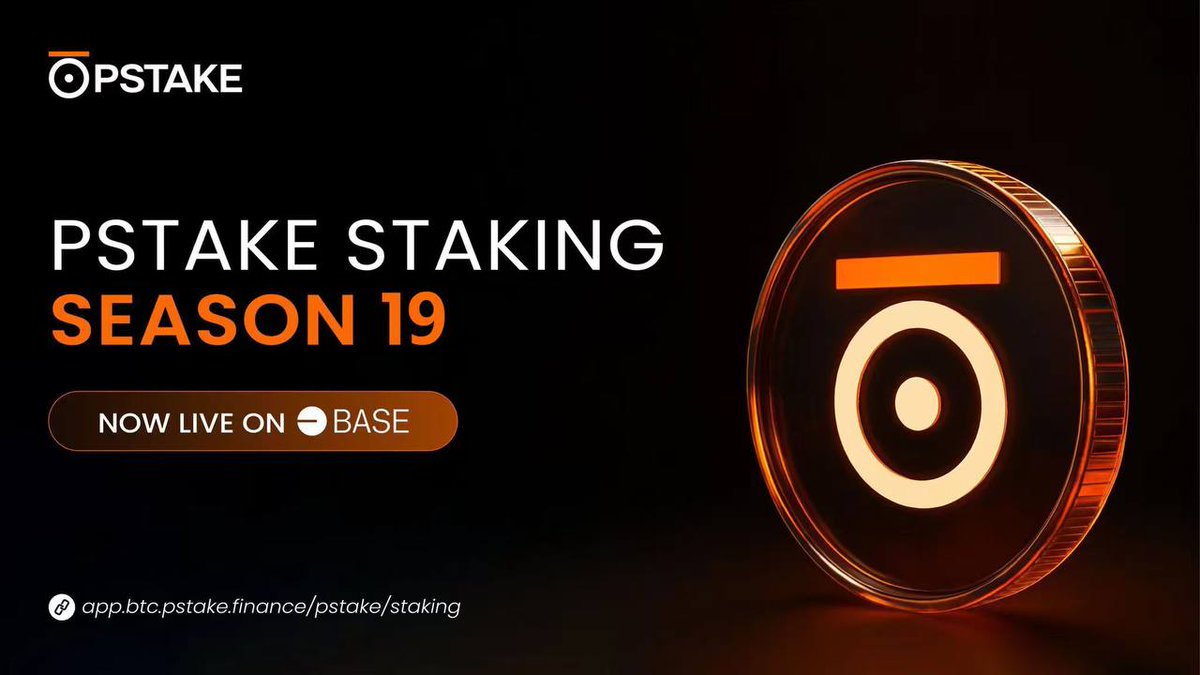pSTAKE Finance-prijs
in EUR

Over pSTAKE Finance
Disclaimer
OKX geeft geen beleggings- of vermogensadvies. Je moet zorgvuldig overwegen of het verhandelen of bezitten van digitale bezittingen voor jou geschikt is in het licht van je financiële toestand. Raadpleeg je juridische, fiscale of beleggingsadviseur als je vragen hebt over je specifieke situatie. Raadpleeg voor meer informatie onze Gebruiksvoorwaarden en Risicowaarschuwing. Door gebruik te maken van de website van derden ('TPW'), ga je ermee akkoord dat elk gebruik van de TPW onderworpen is aan en beheerst wordt door de voorwaarden van de TPW. Tenzij uitdrukkelijk schriftelijk vermeld, zijn OKX en haar partners ("OKX") op geen enkele manier verbonden met de eigenaar van de exploitant van de TPW. Je gaat ermee akkoord dat OKX niet verantwoordelijk of aansprakelijk is voor verlies, schade en andere gevolgen die voortvloeien uit jouw gebruik van de TPW. Houd er rekening mee dat het gebruik van een TPW kan leiden tot verlies of vermindering van je bezittingen. Het product is mogelijk niet in alle rechtsgebieden beschikbaar.
Prijsprestaties van pSTAKE Finance
pSTAKE Finance op sociale media
Handleidingen

Maak een gratis OKX-account aan.
Stort geld op je account.
Kies je crypto.
pSTAKE Finance Veelgestelde vragen
pSTAKE Finance (PSTAKE) is een liquide stakingprotocol dat is gebouwd op de Persistence-blockchain. Het platform stelt gebruikers in staat om hun activa, waaronder native munten van verschillende blockchains, moeiteloos en op effectieve wijze te staken.
Een van de belangrijkste voordelen van pSTAKE Finance is het vermogen om de waarde van gestakete munten te ontgrendelen. Gebruikers ontvangen secundaire tokens die hun gestakete activa vertegenwoordigen door deel te nemen aan het liquide stakingprotocol van het platform. Deze tokens kunnen vrij worden gebruikt in verschillende gedecentraliseerde financieringsprotocollen (DeFi), waardoor gebruikers extra kansen krijgen om beloningen te verdienen en hun nut te maximaliseren binnen het DeFi-ecosysteem.
Eenvoudig pSTAKE-tokens kopen op het OKX-cryptovalutaplatform. Beschikbare handelsparen in de OKX-spothandelsterminaal zijn onder meerPSTAKE/USDT.
Swap je bestaande cryptovaluta, waaronderBitcoin (BTC),Ethereum (ETH),Tether (USDT), enUSD Coin (USDC), voor pSTAKE zonder vergoedingen en zonder prijsverschuiving door gebruik te maken vanOKX Convert.
Duik dieper in pSTAKE Finance
Společnost pSTAKE Finance (PSTAKE) je významným hráčem v rychle se rozvíjejícím sektoru decentralizovaného financování (DeFi). Zatímco kryptoměny byly tradičně omezeny na dlouhodobé investování a krátkodobé obchodování, nástup DeFi zavedl širokou škálu decentralizovaných bankovních služeb. Mezi těmito službami se jako oblíbená volba objevilo stakování, které přilákalo řadu projektů v této oblasti. pSTAKE Finance vyniká jako inovativní platforma pro stakování, která svým uživatelům nabízí jedinečné vlastnosti a funkce.
Co je pSTAKE Finance?
Platforma pSTAKE Finance je likvidní řešení pro stakování, jehož cílem je uvolnit plný potenciál tokenů PoS tím, že poskytuje likviditu pro stakovaná aktiva. Protokol je navržen tak, aby vytěžil podkladovou hodnotu aktiv stakovaných na PoS řetězce.
Jednou z unikátních vlastností pSTAKE Finance je distribuce odměn za stakování v pTOKENECH bez ohledu na nativní řetězec vložených stakovaných aktiv. Protokol spolupracuje se zavedenými validátory z různých řetězců L1, včetně řetězců Stake-fish, Chorus One a Everstake, což zajišťuje spolehlivost a bezpečnost procesu stakování.
Tým projektu pSTAKE Finance
Projektový tým pSTAKE Finance tvoří zakladatelé Tushar Aggarwal a Deepanshu Tripathi. Aggarwal zároveň zastává pozici generálního ředitele společnosti Persistence, zatímco Tripathi působí jako technický ředitel. Dále tým tvoří vedoucí projektu Mikhil Pandey a vedoucí inženýr Kamlesh Parikarath Marar.
Jak funguje systém pSTAKE Finance?
Společnost pSTAKE Finance funguje tak, že poskytuje podporu sítím PoS tím, že drží tokeny pSTAKE. Uživatelé mohou ukládat svá aktiva v síti pSTAKE, což jim umožňuje razit derivátové tokeny ERC-20, které jsou navázány 1:1 na původní aktiva.
Tyto derivátové tokeny lze využít v rámci ekosystému Ethereum DeFi, což uživatelům umožňuje maximalizovat jejich výnos. Tyto derivátové tokeny lze navíc rozšířit na více blockchainových sítí na základě faktorů, jako je využití, likvidita a další aspekty.
Uložením aktiv na platformě pSTAKE mají uživatelé tu výhodu, že mohou okamžitě opustit své stakované pozice bez čekací doby. Tato funkce je výhodná při náhlých cenových výkyvech a umožňuje uživatelům rychle reagovat na změny na trhu.
PSTAKE: nativní token pSTAKE Finance
PSTAKE je nativní kryptoměna společnosti pSTAKE Finance, která byla spuštěna koncem února 2022. Celková a maximální nabídka tokenů PSTAKE je stanovena na 500 milionů. Je však nezbytné zdůraznit, že nabídka tokenů PSTAKE v oběhu činí pouze 44,3 milionu, což představuje přibližně 8,87 % celkové kryptoměny v oběhu.
Případy použití tokenu PSTAKE
Primárním případem použití tokenu PSTAKE je stakování, jak vyplývá z jeho názvu. Kromě toho lze token využít k obchodování, investování, půjčování, úvěrování a poskytování likvidity na decentralizovaných burzách (DEX).
Distribuce tokenu PSTAKE
PSTAKE distribuoval své tokeny na podporu růstu a rozvoje projektu.
Distribuce tokenů je následující:
- 26 % je přiděleno do fondu pro rozvoj pStake.
- 20 % je vyhrazeno pro pokladnu společnosti.
- 20 % je určeno na strategický prodej.
- 16 % je přiděleno základnímu týmu.
- 6 % je určeno na zpětné odměny.
- 5 % je vyhrazeno výhradně pro veřejný prodej.
- 3 % jsou určena pro stakery XPRT.
- 2 % jsou vyčleněna pro startovací platformu Alpha.
- 2 % jsou alokována na zavádění protokolu.
Finance pSTAKE: Inovativní sázkový protokol
Protokol pSTAKE Finance je inovativní stakovaný protokol, který představuje jedinečné příležitosti pro uživatele v sektoru DeFi. Díky pSTAKE Finance mohou uživatelé maximalizovat své výdělky tím, že s využitím stejných mincí vydělají dvojnásobnou částku. To jim umožňuje odemknout další příležitosti a dále těžit z funkcí DeFi. Pro jednotlivce, kteří chtějí profitovat z oblasti DeFi, je pSTAKE Finance projektem, který stojí za zvážení a prozkoumání.
ESG-vermelding





































